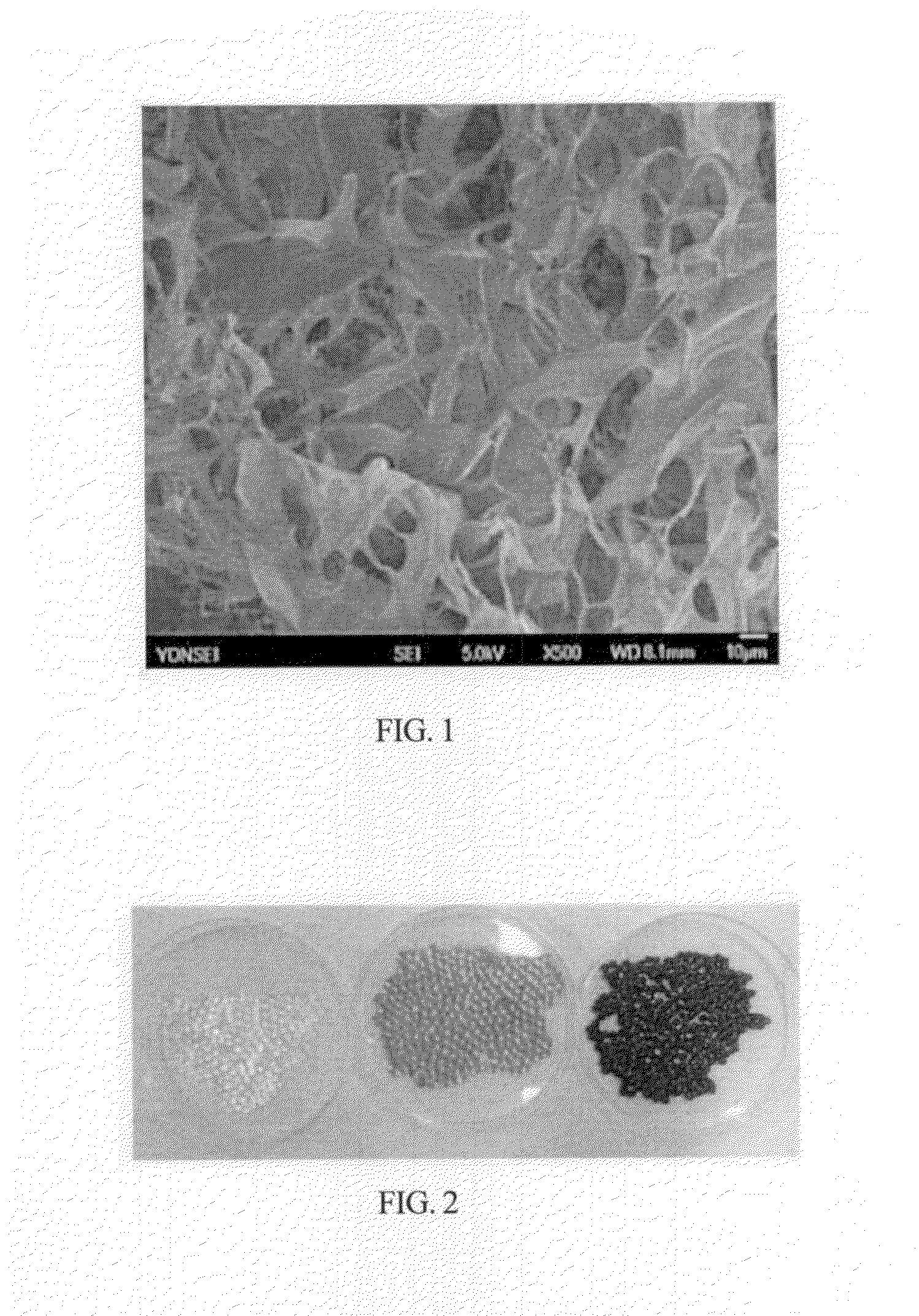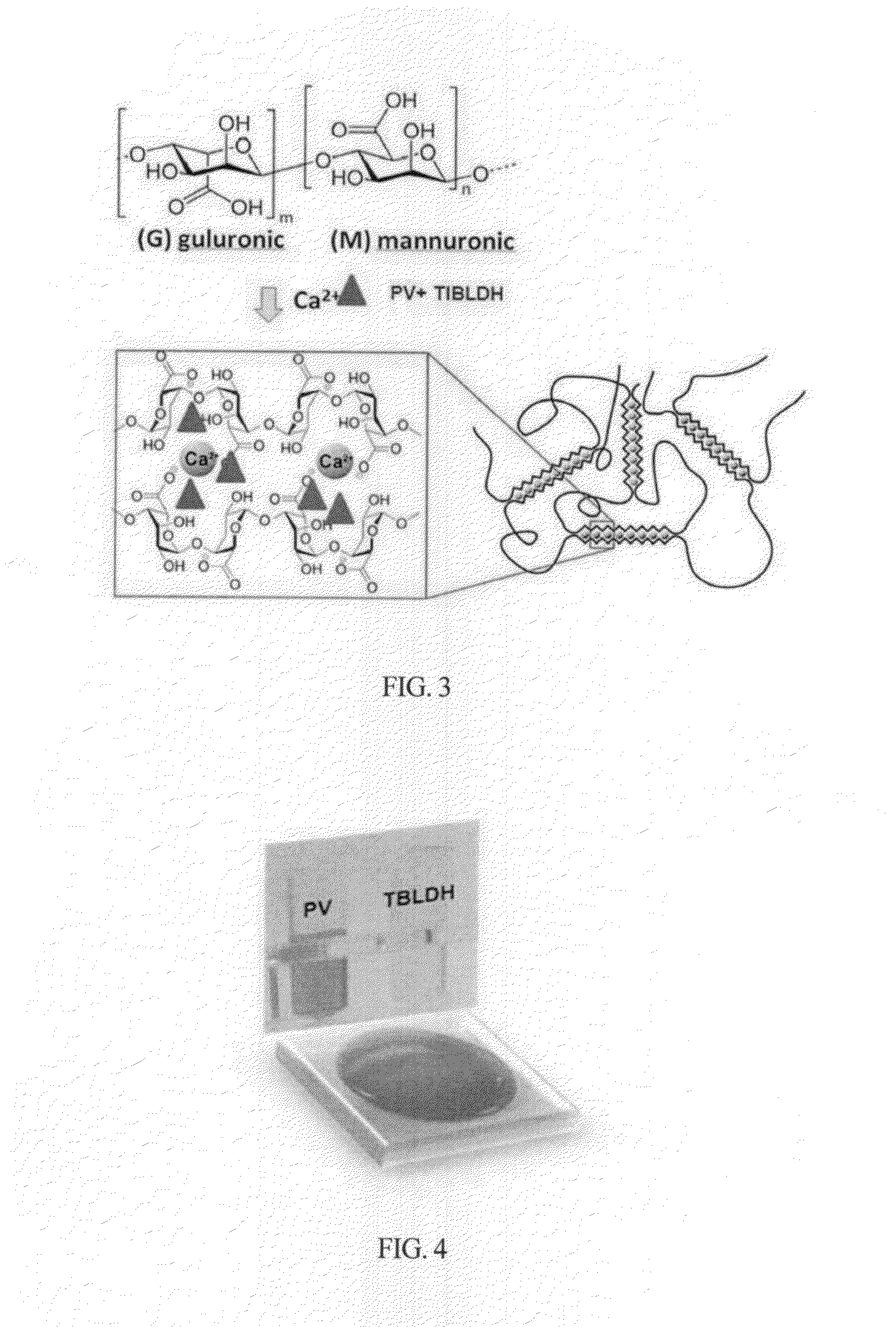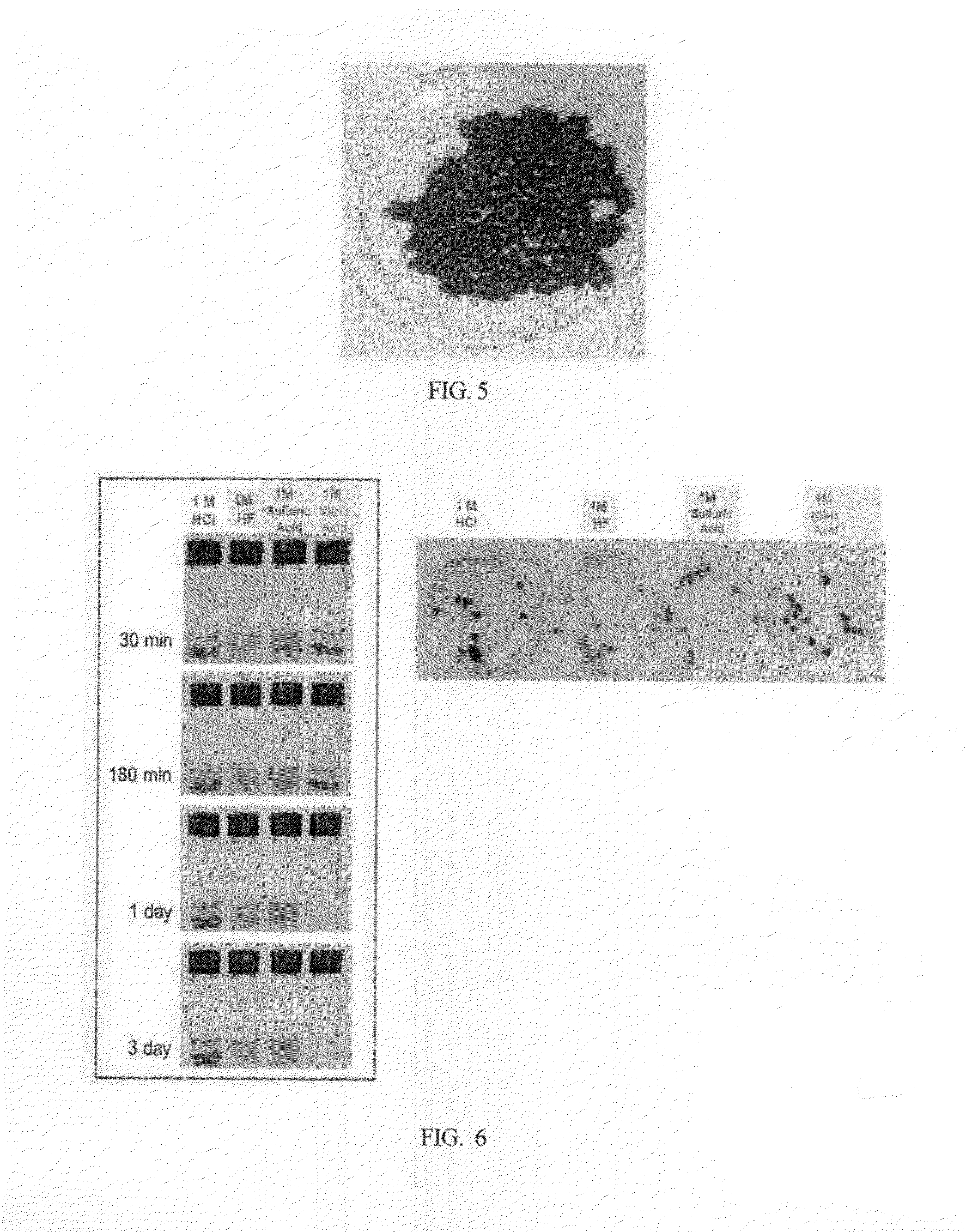Method for preparing hydrogel bead for detection of hydrofluoric acid and kit comprising the same
- Summary
- Abstract
- Description
- Claims
- Application Information
AI Technical Summary
Benefits of technology
Problems solved by technology
Method used
Image
Examples
example 1
Preparation of Organometallic Ligand Compound for Detection of Fluoric Acid
[0047]To prepare an organometallic ligand compound for detection of hydrofluoric acid, 10 nit of 1 mM pyrocatechol violet solution was mixed with 200 of 0.003 mM TBLADH to make a mixed solution as shown in FIG. 4.
example 2
Preparation of Hydrogel Bead for Detection of Hydrofluoric Acid
[0048]To prepare a hydrogel bead for detection of hydrofluoric acid, alginate (Mw 25,000) was dissolved in distilled water at a concentration of 1% (w / v) to make an aqueous alginate solution. The aqueous alginate solution and the mixed solution prepared in Example 1 were mixed with each other at a volume ratio of 1:1, and then immersed in 1M calcium chloride, thereby forming a bead as shown in FIG. 5.
example 3
Observation of Change in Color of Hydrogel Bead in Solutions of Hydrofluoric Acid and Various Acids
[0049]In order to evaluate the selective response of the hydrogel bead of Example 2 to hydrofluoric acid, the responses of the hydrogel bead to various acid solutions were evaluated under the same conditions in the following manner.
[0050]The hydrogel bead was immersed in each of 1M hydrofluoric acid, hydrochloric acid, sulfuric acid and nitric acid, and then observed for 30 minutes, 180 minutes, 1 day and 3 days. The results of the observation are shown in FIG. 6. As can be seen in FIG. 6, the bead in hydrochloric acid changed color to yellow, unlike those in other acids. Also, the color of the bead in nitric acid gradually disappeared, unlike those in other acids. This is because when the bead comes into contact with nitric acid, TBLADH is separated by forming a hydrogen bond with nitric acid, and the natural structure of the remaining pyrocatechol violet is changed due to the strong ...
PUM
 Login to View More
Login to View More Abstract
Description
Claims
Application Information
 Login to View More
Login to View More - R&D
- Intellectual Property
- Life Sciences
- Materials
- Tech Scout
- Unparalleled Data Quality
- Higher Quality Content
- 60% Fewer Hallucinations
Browse by: Latest US Patents, China's latest patents, Technical Efficacy Thesaurus, Application Domain, Technology Topic, Popular Technical Reports.
© 2025 PatSnap. All rights reserved.Legal|Privacy policy|Modern Slavery Act Transparency Statement|Sitemap|About US| Contact US: help@patsnap.com



